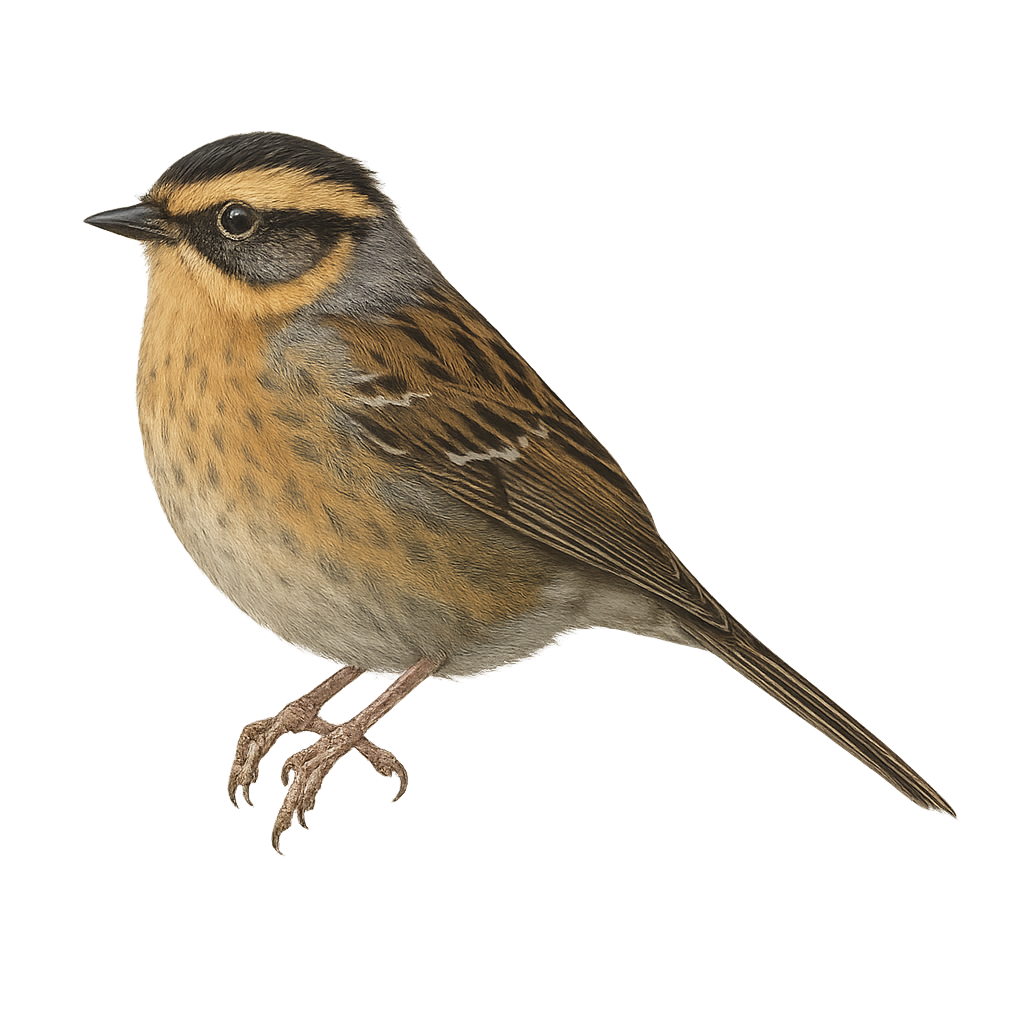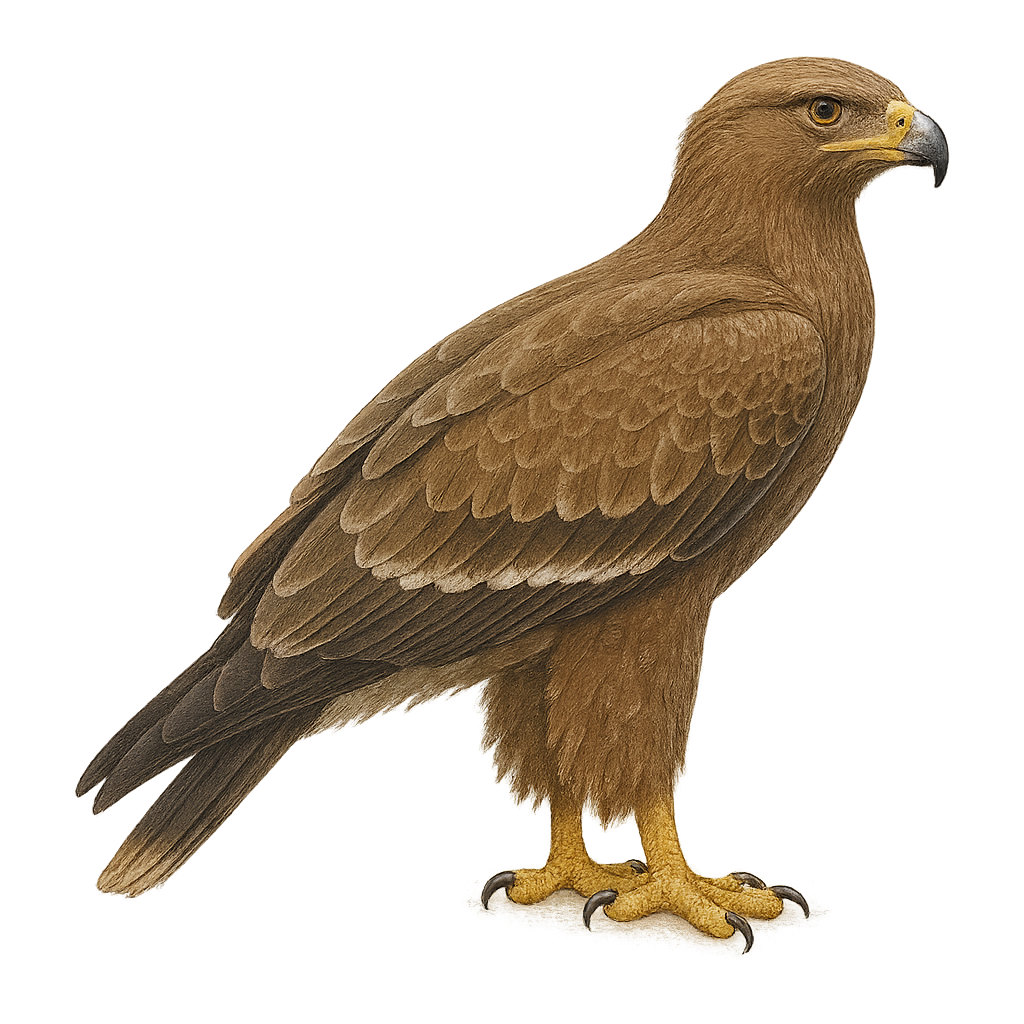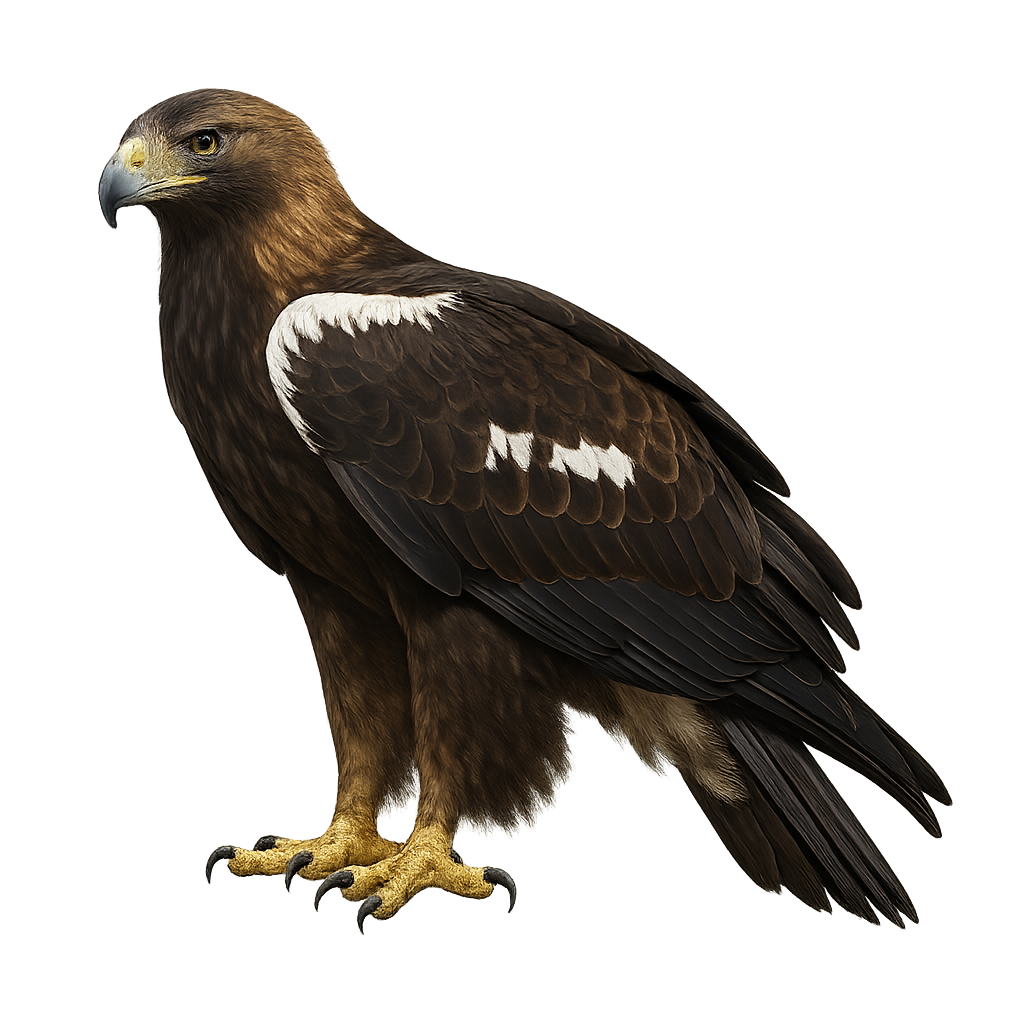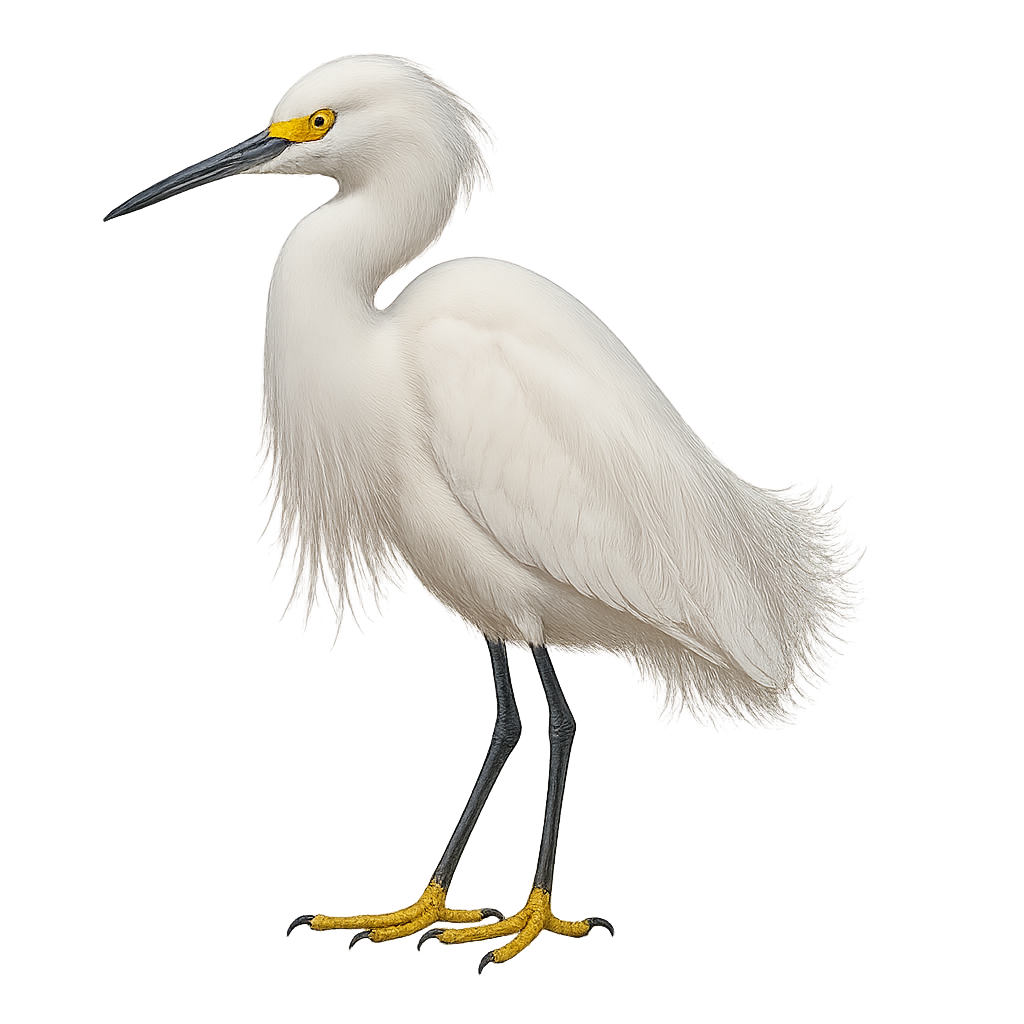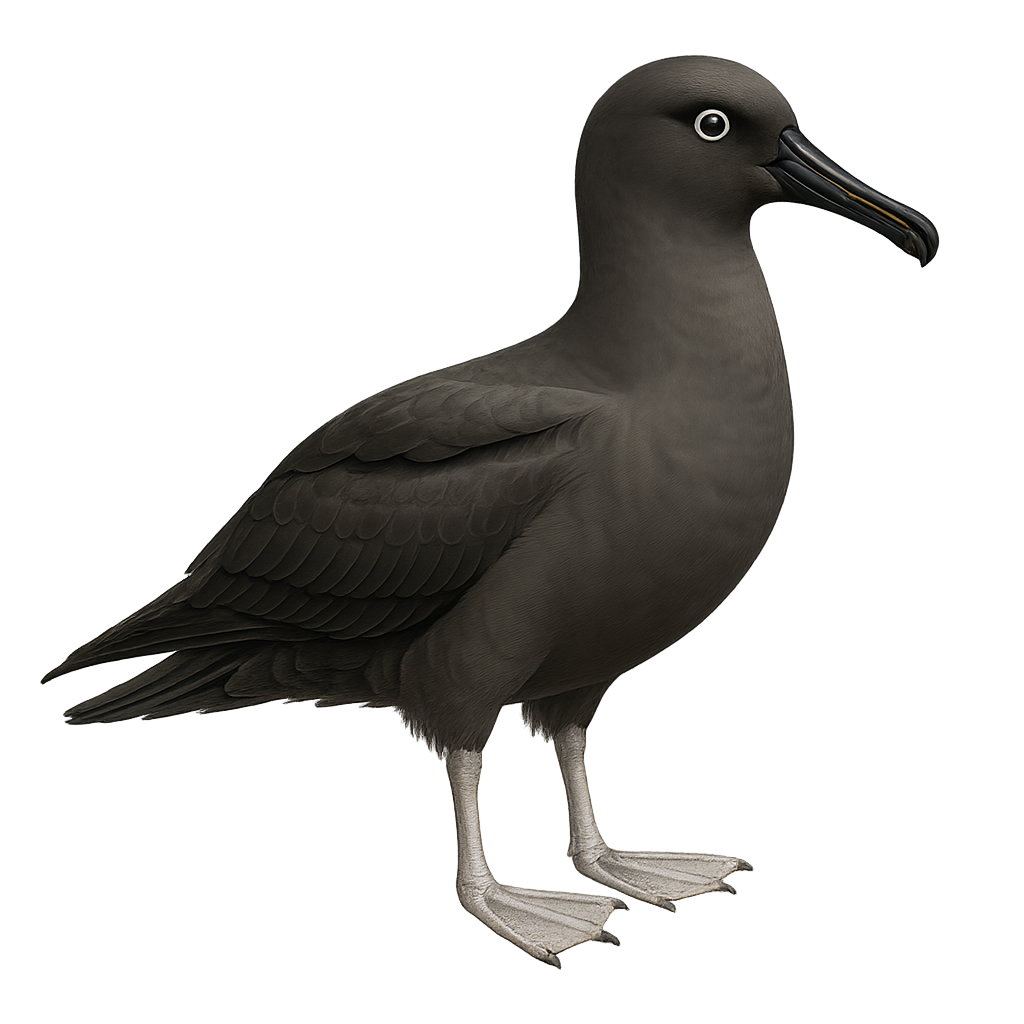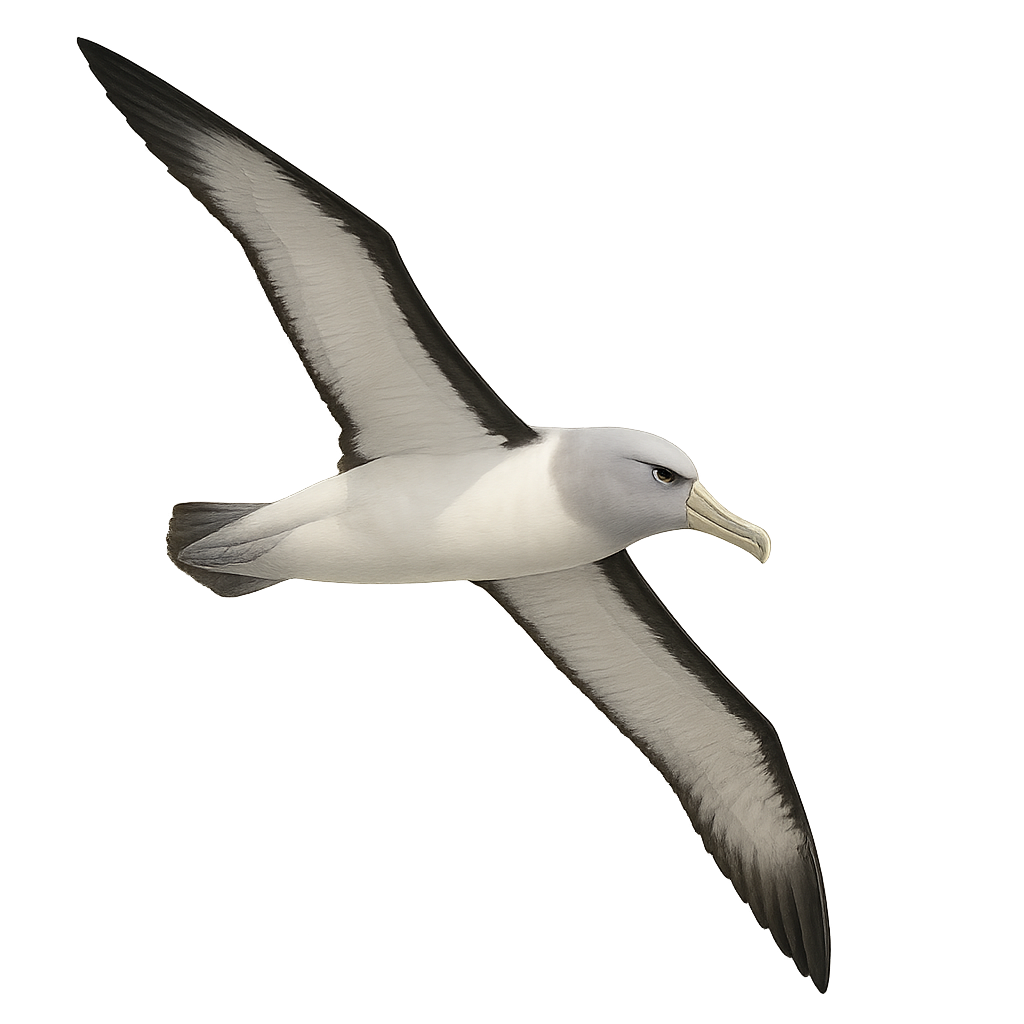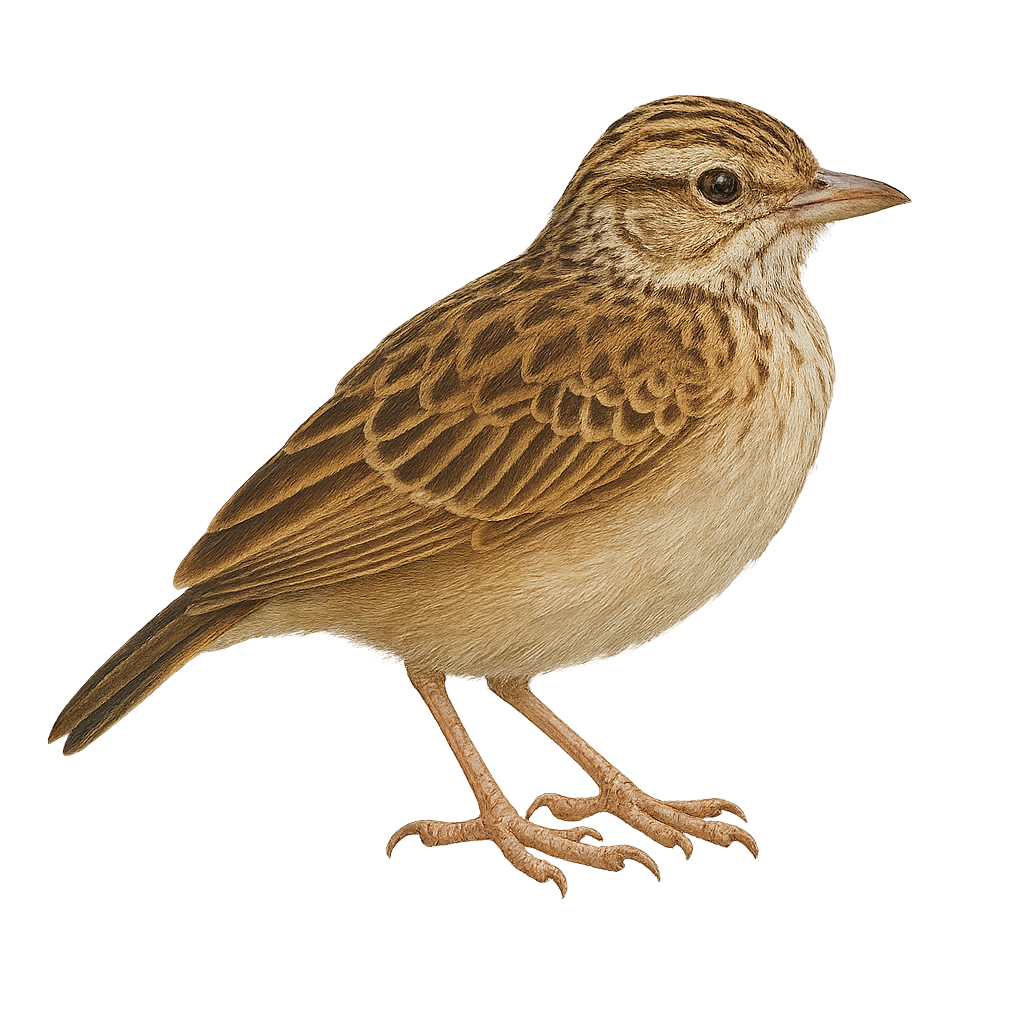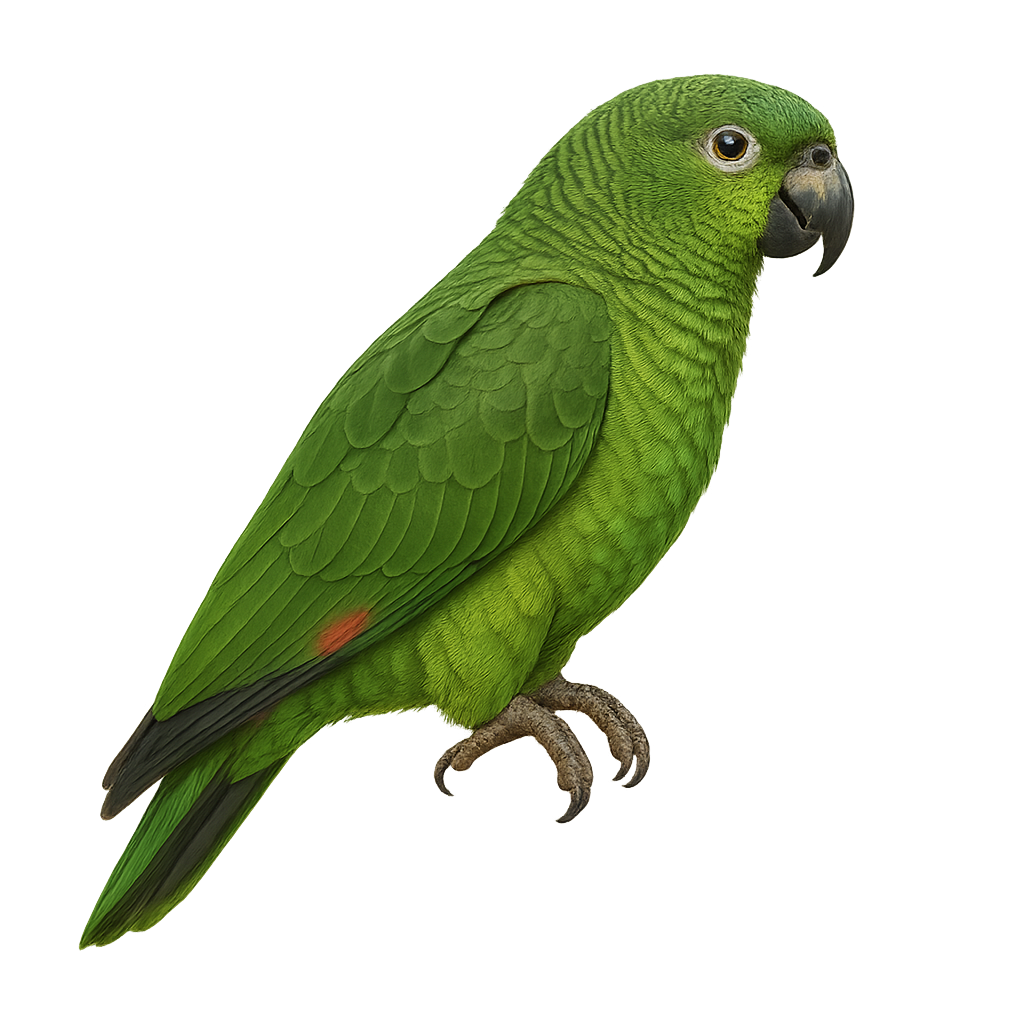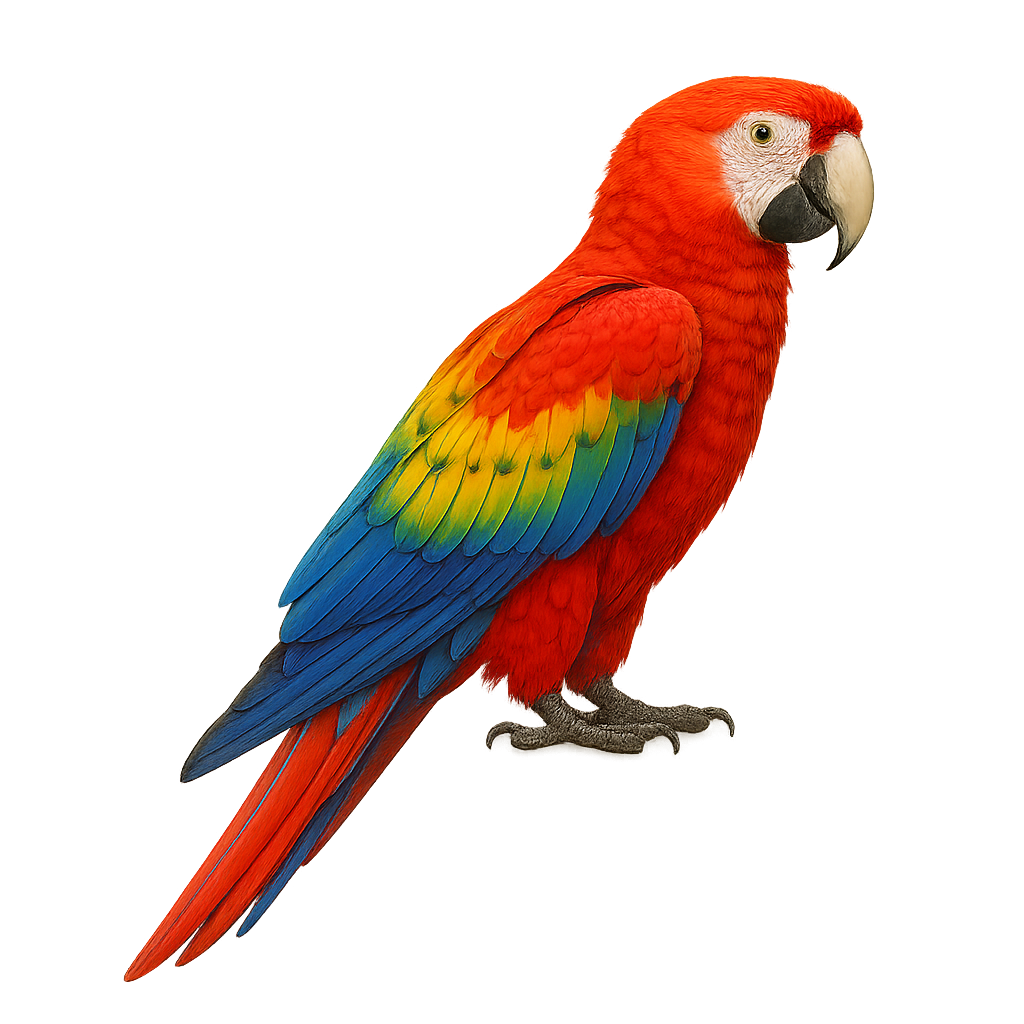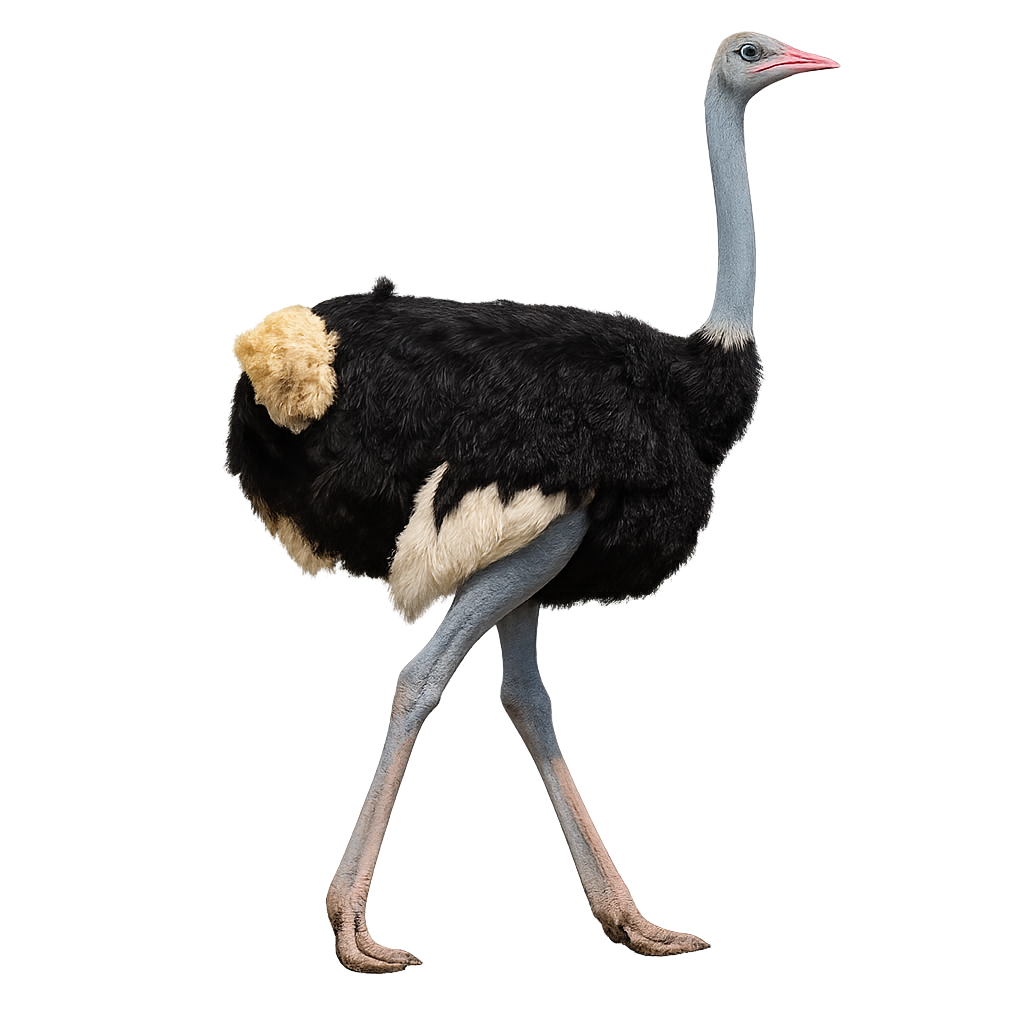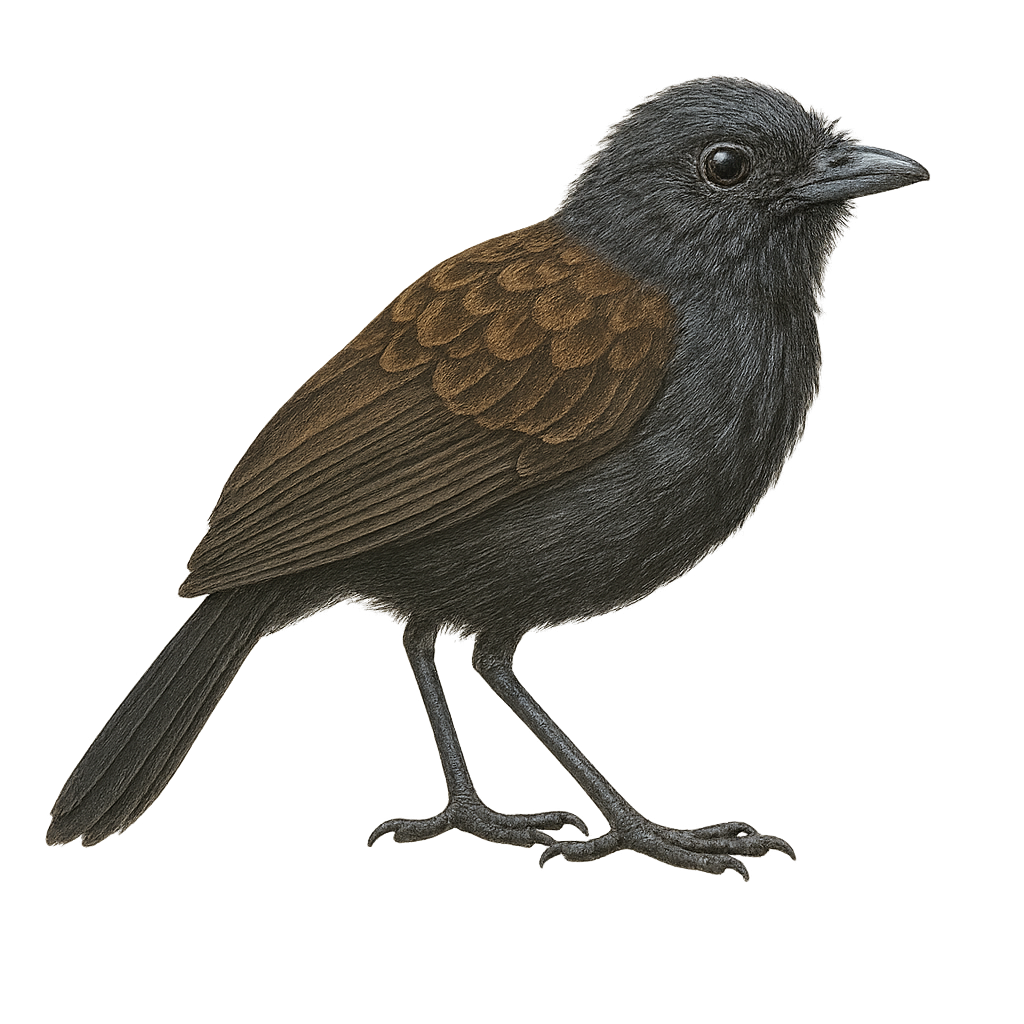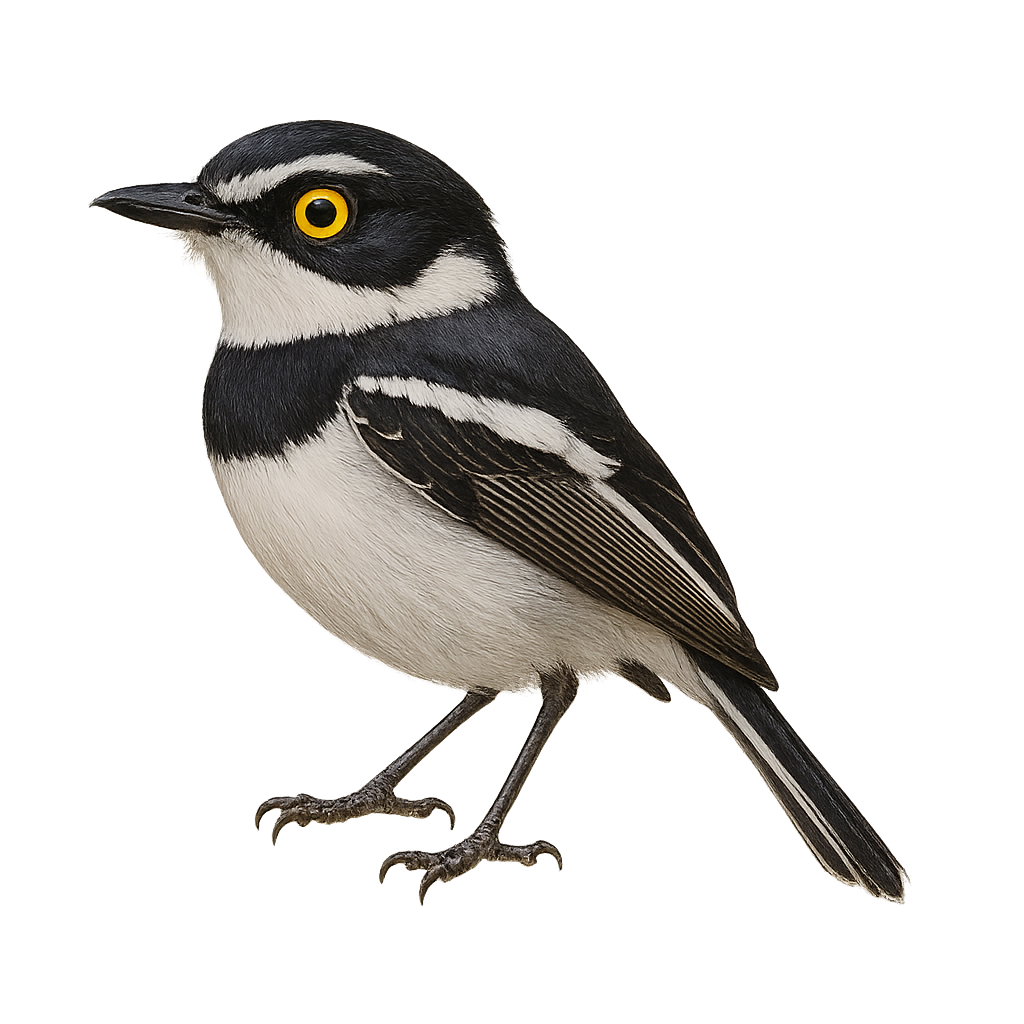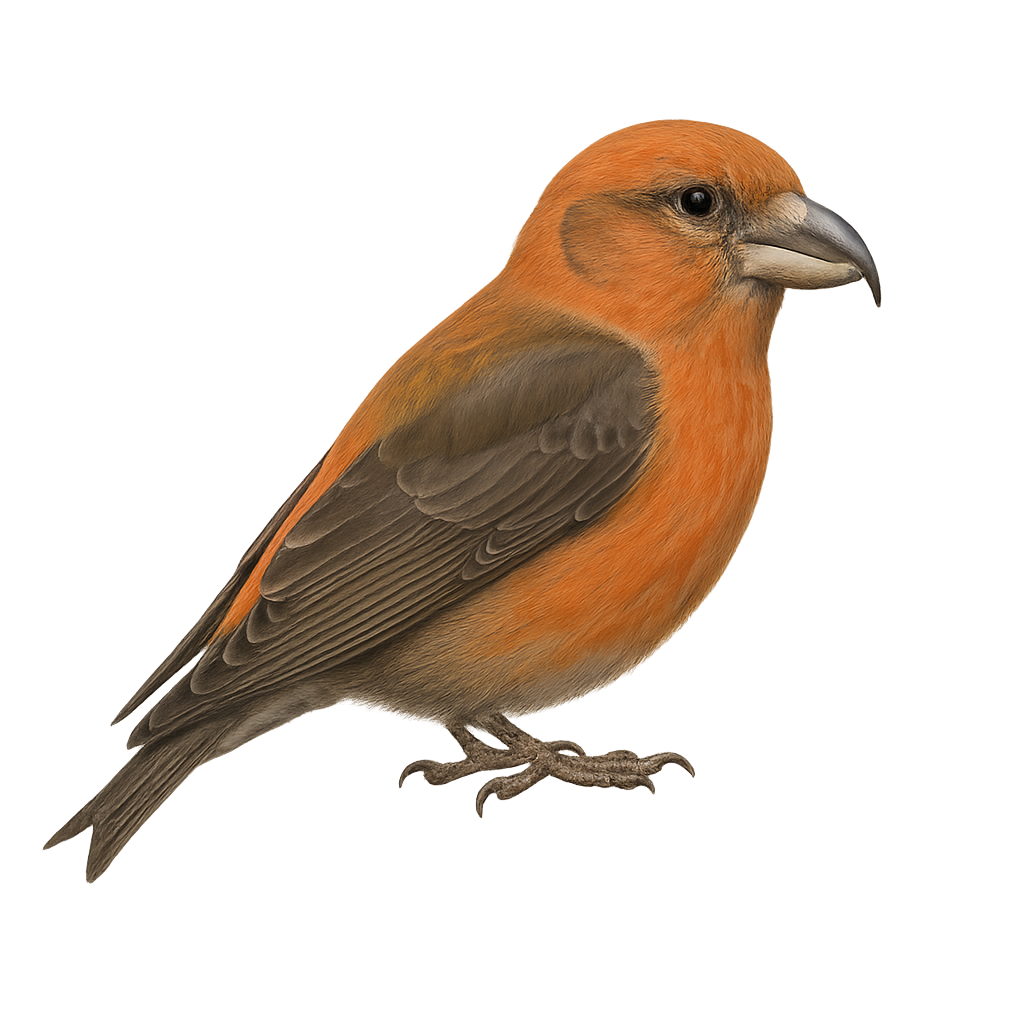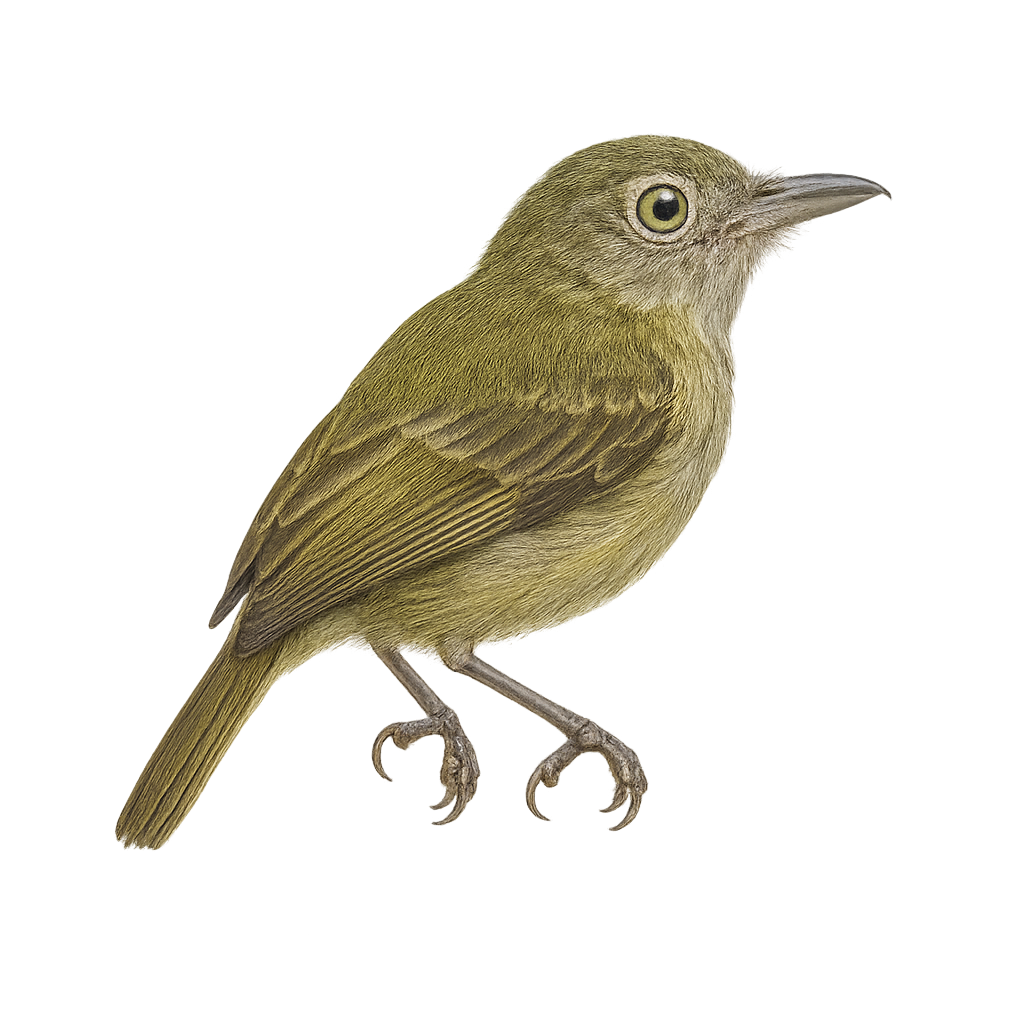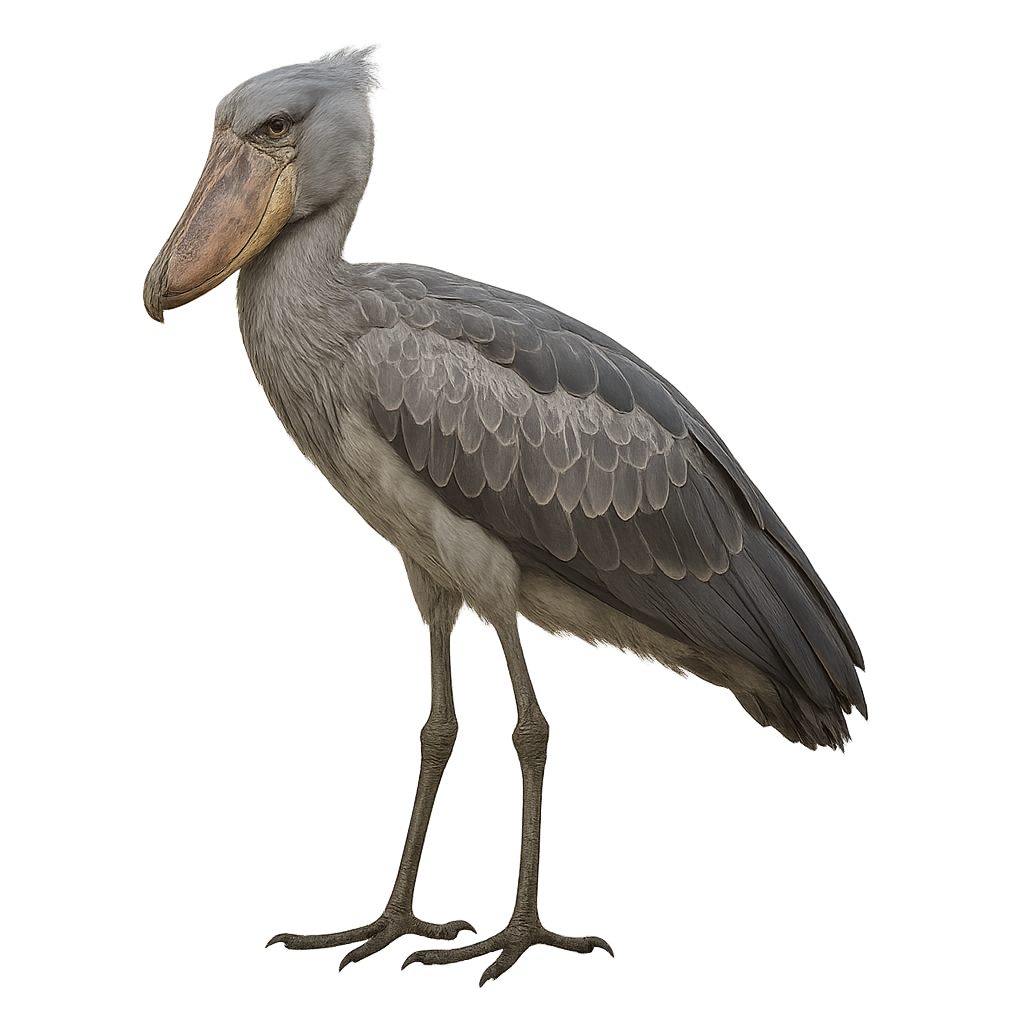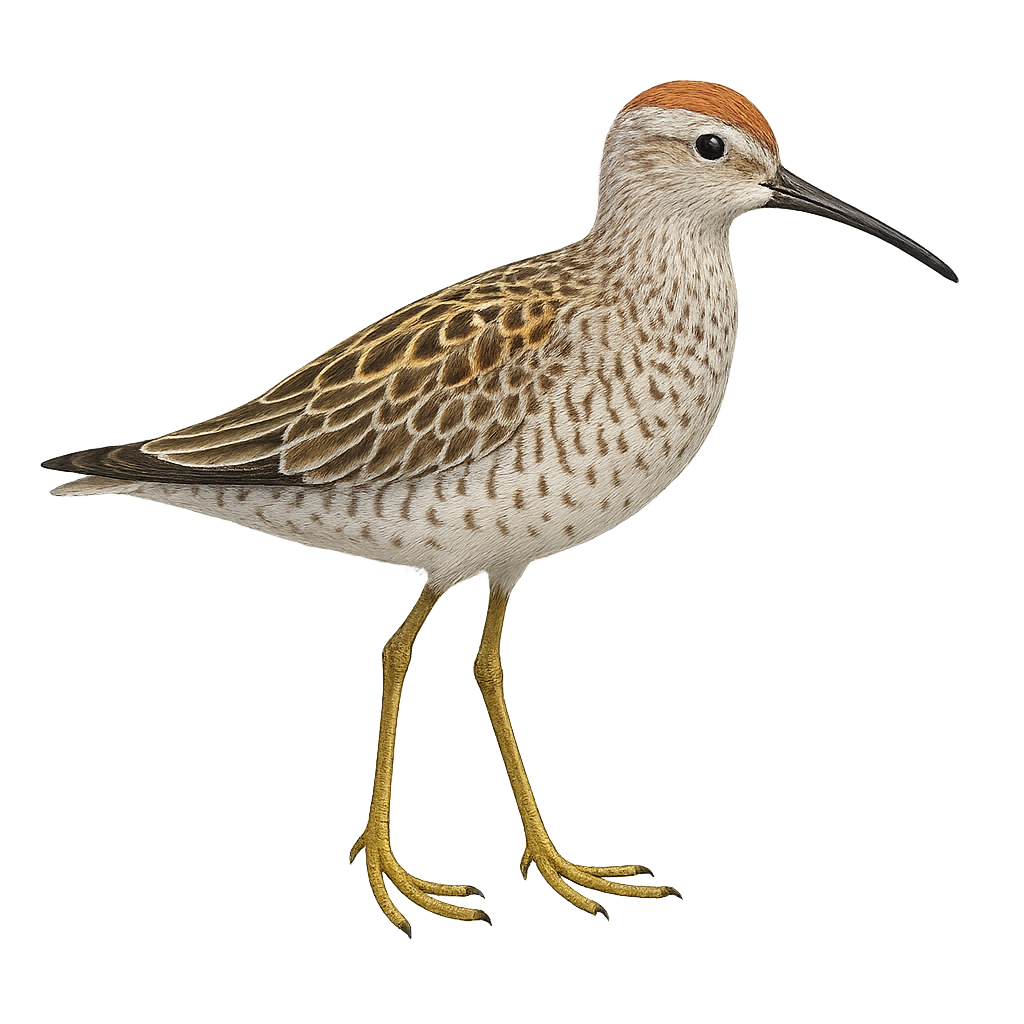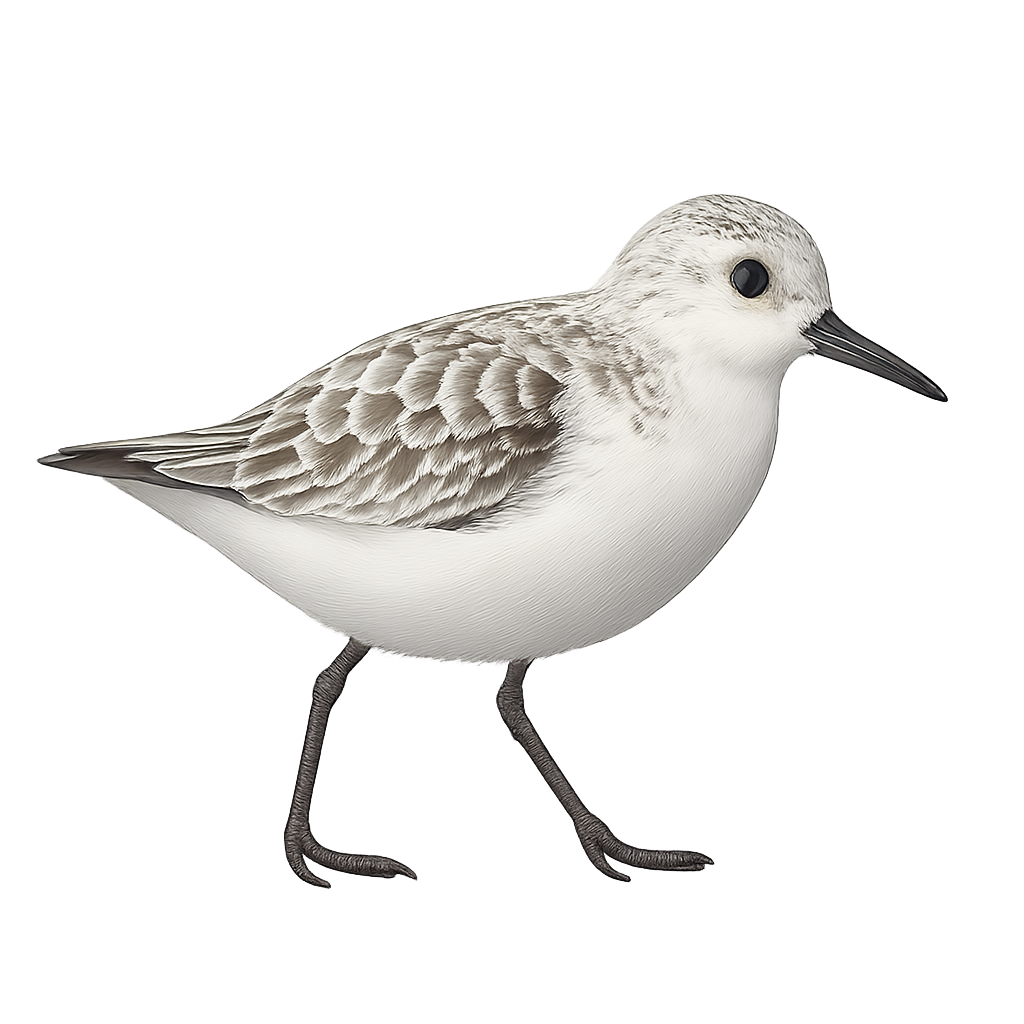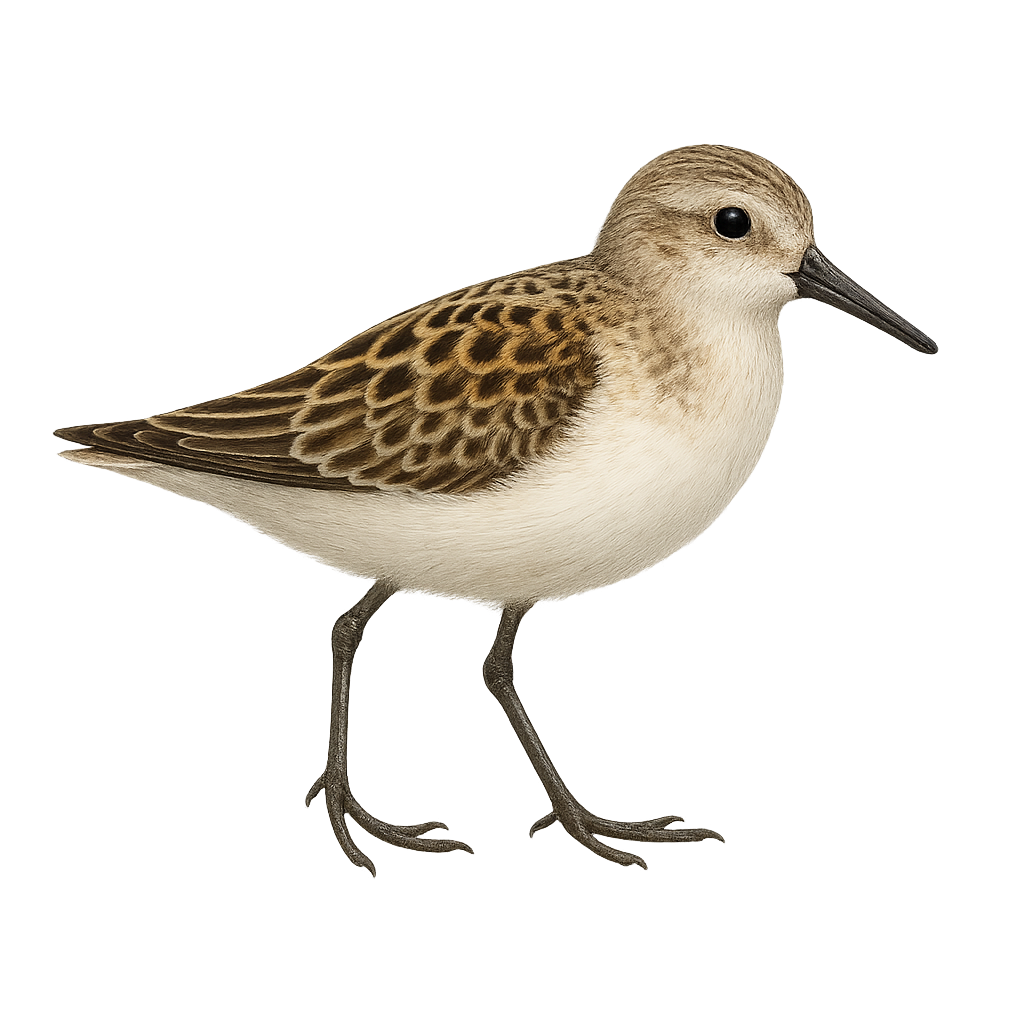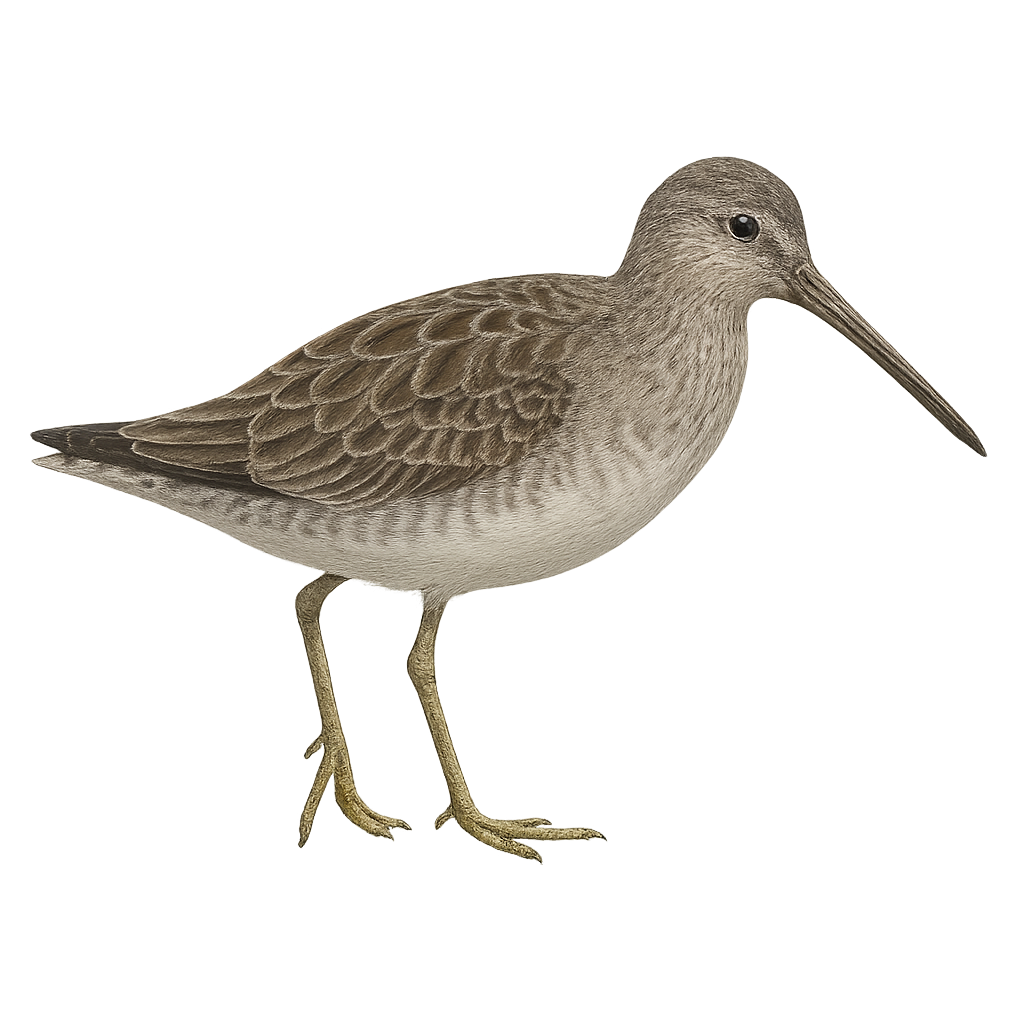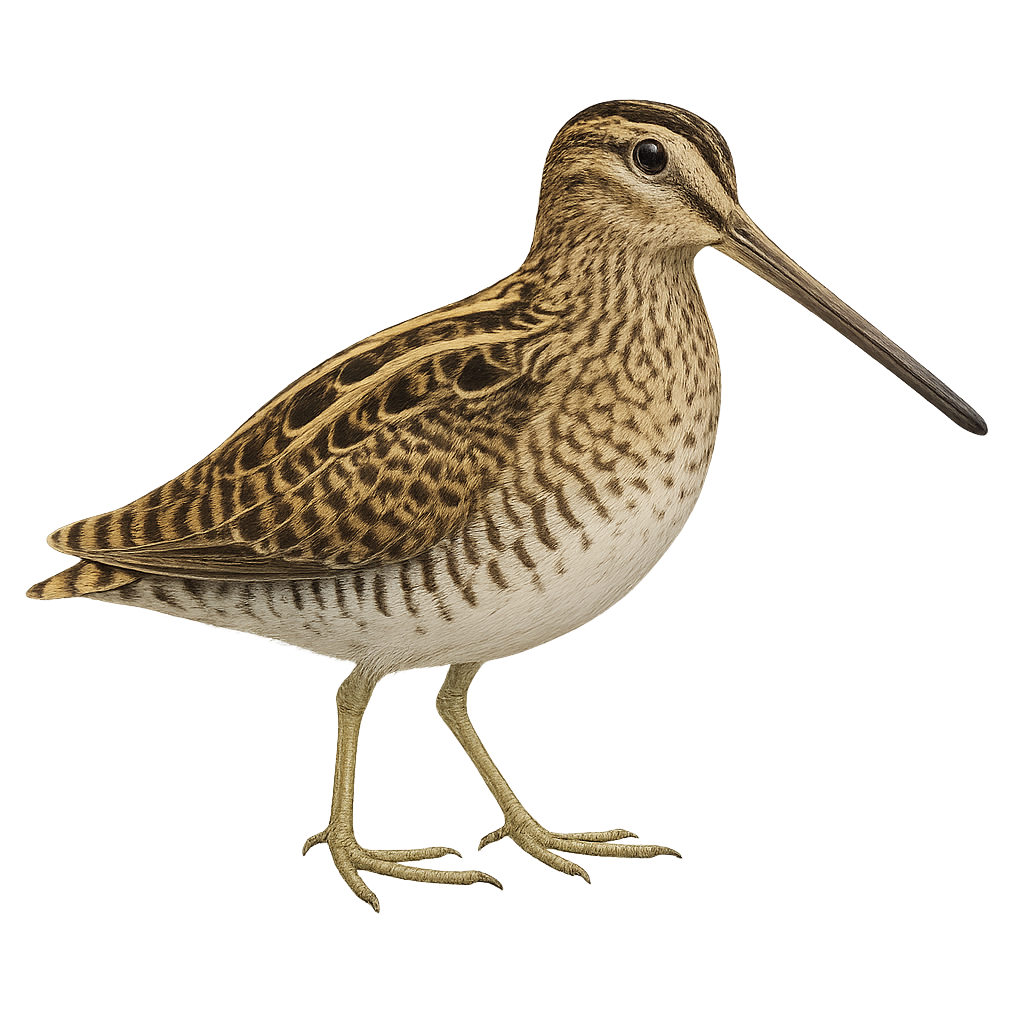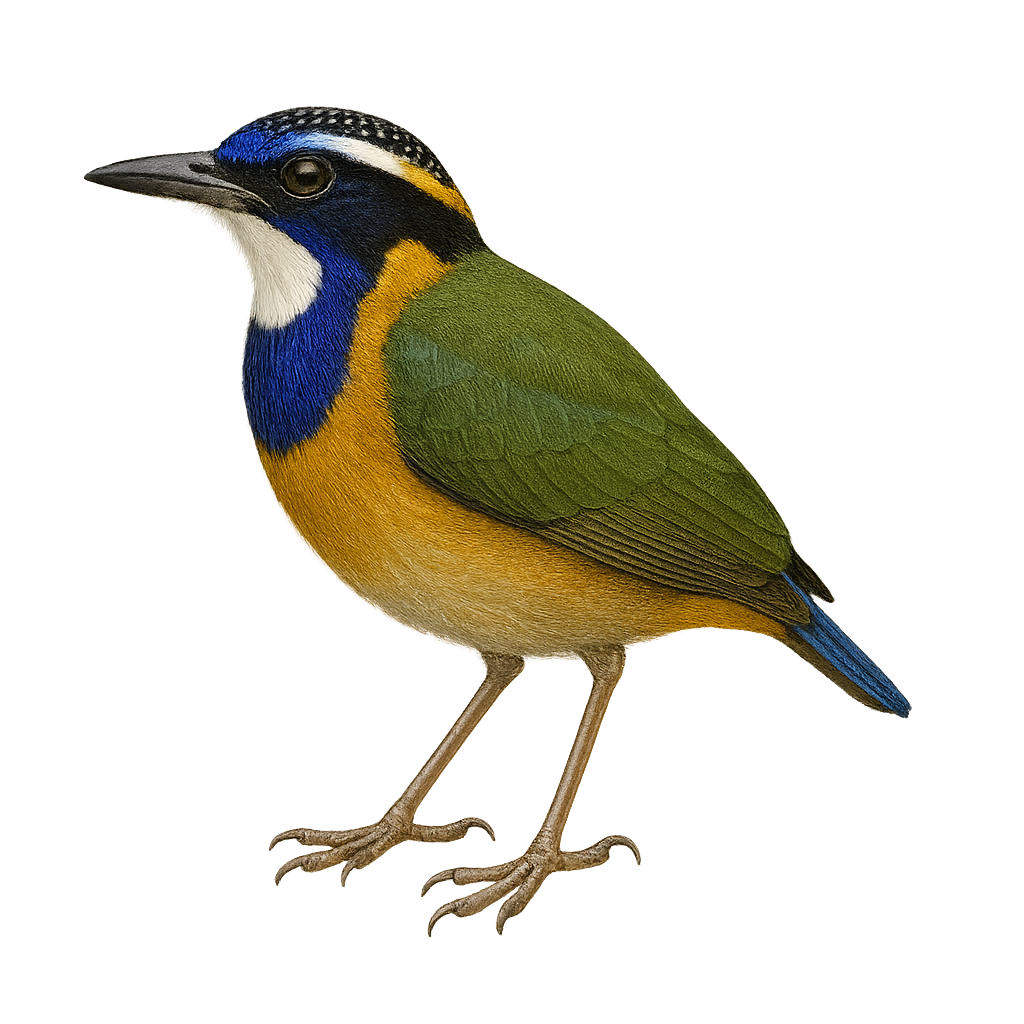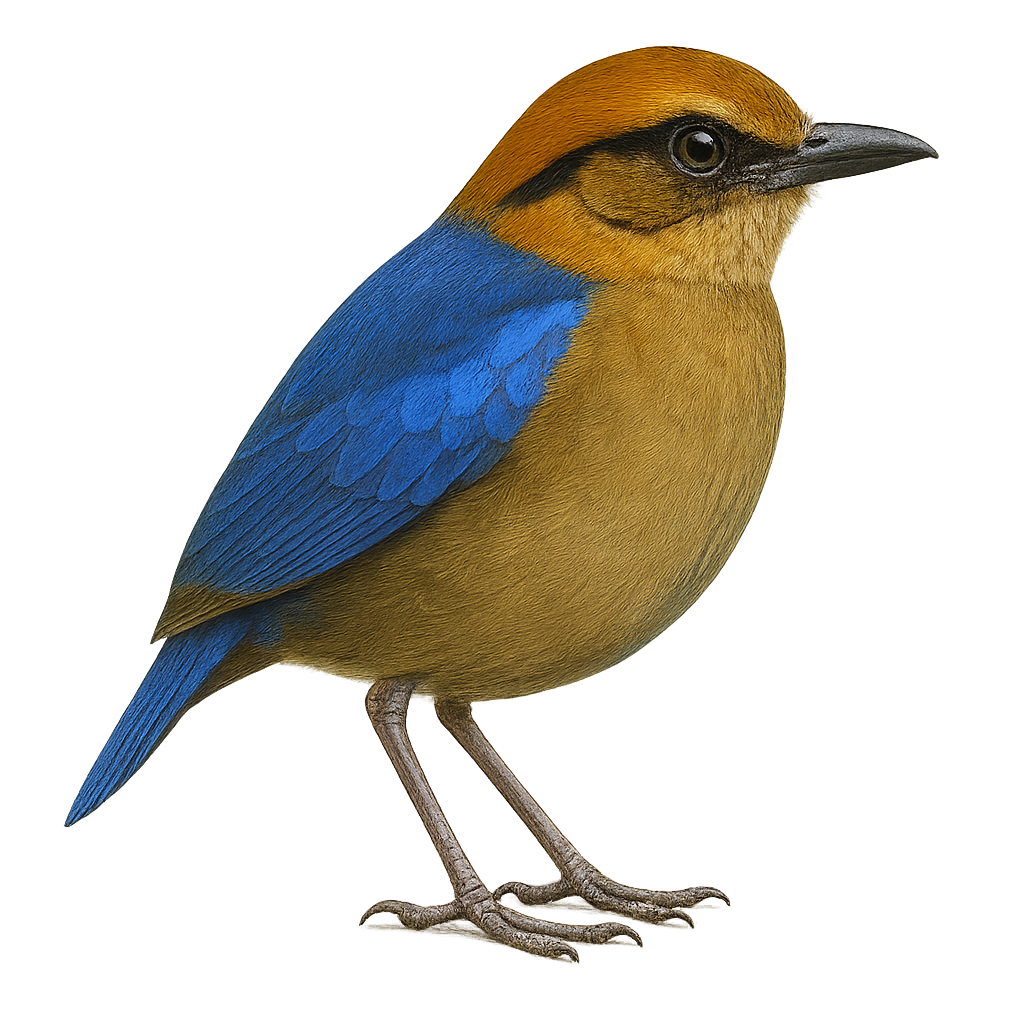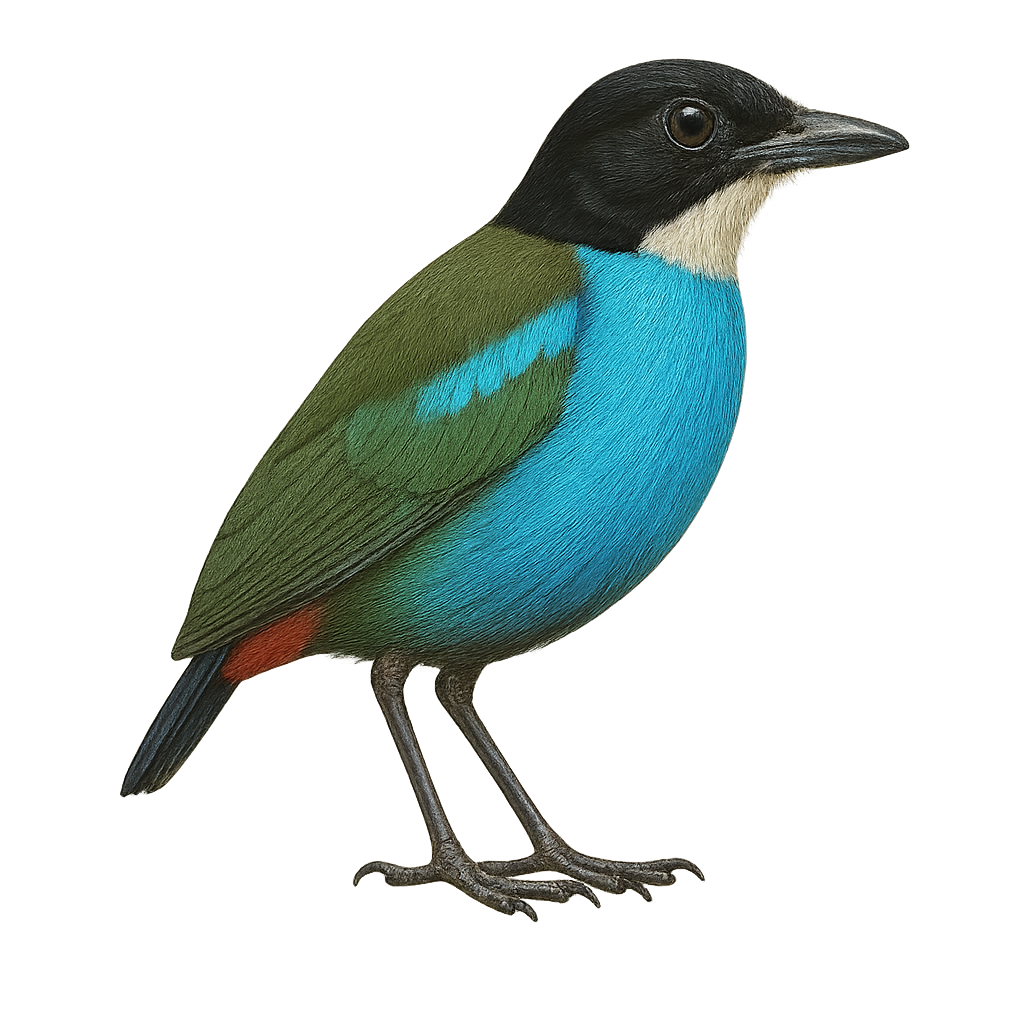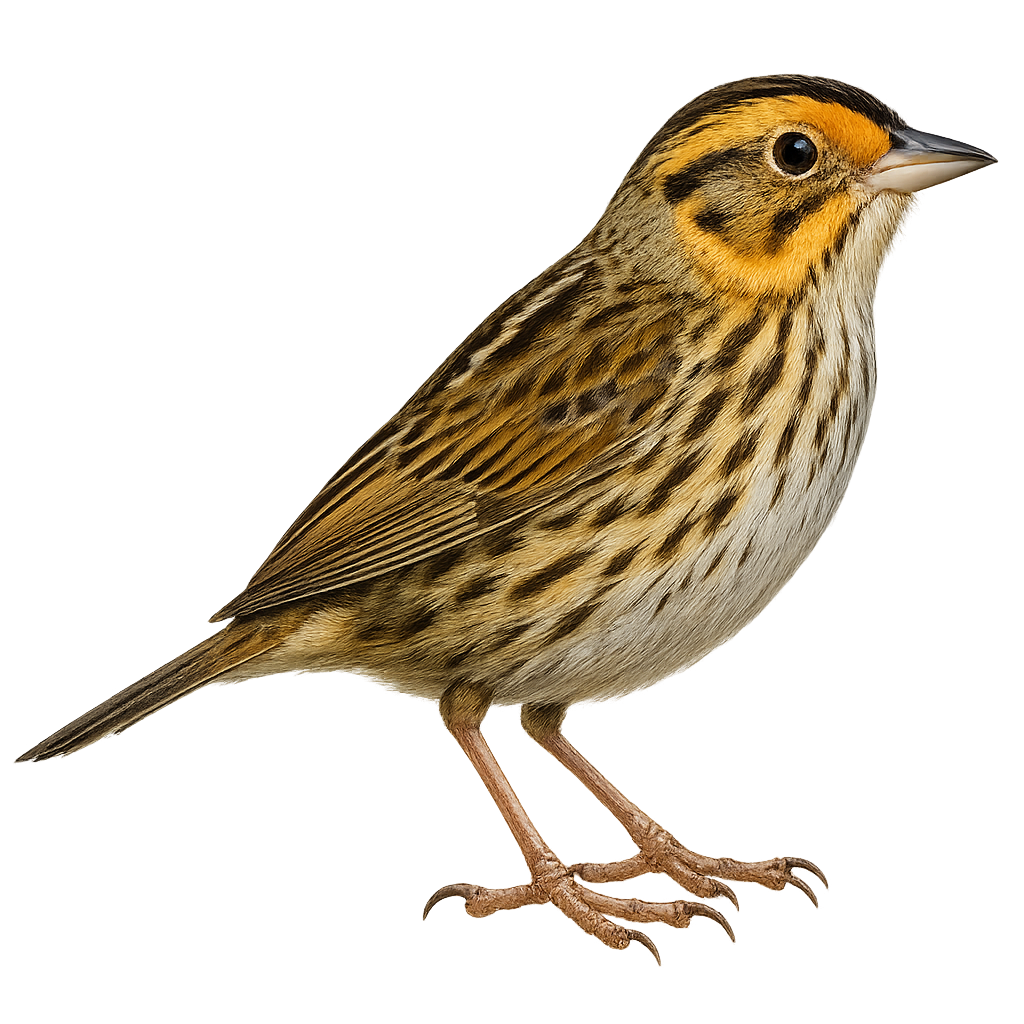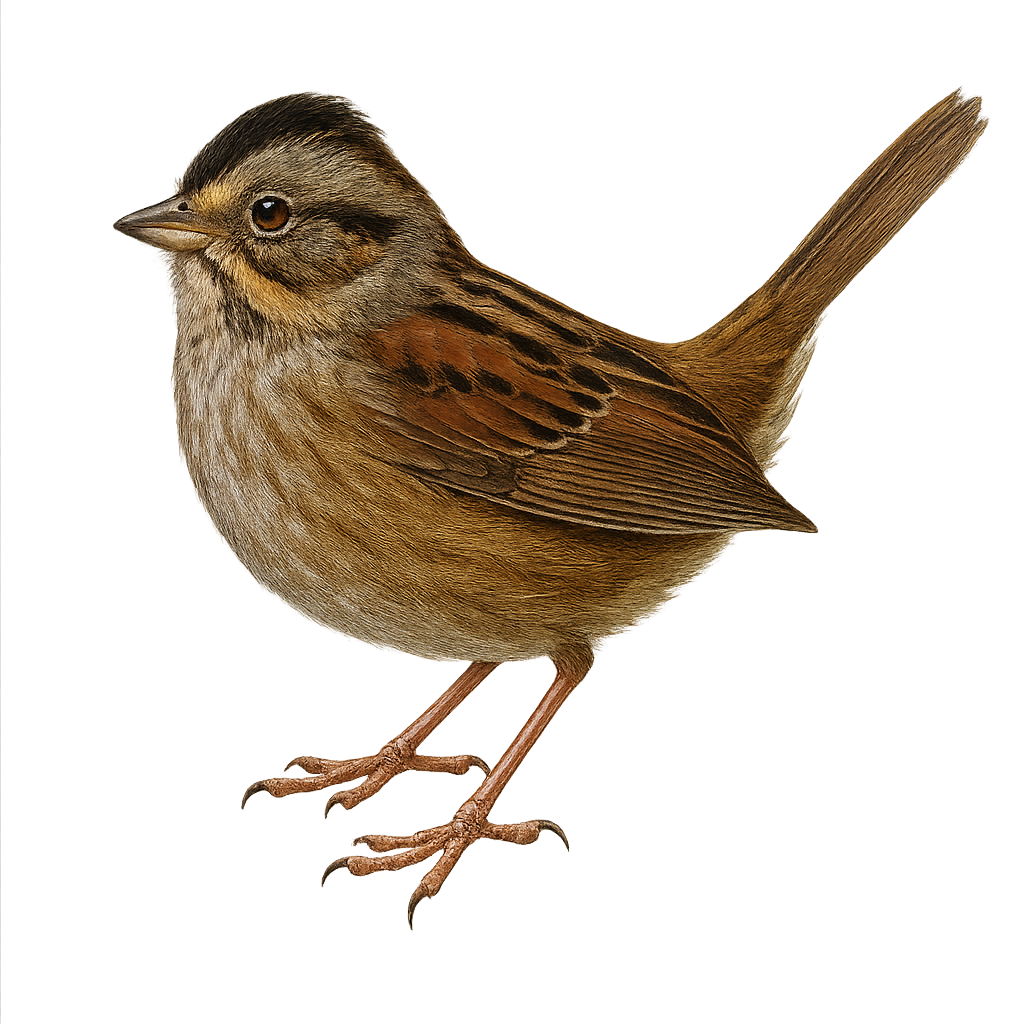The Siberian Accentor, Prunella montanella, is a small passerine bird belonging to the Prunellidae family. It is primarily found in mountainous regions of Asia, particularly in Siberia and Mongolia. This bird is characterized by its brown and gray plumage, with streaked patterns on its back and wings. Its head features a dark brown cap and a white throat, making it easily recognizable. The Siberian Accentor is a migratory bird, spending its winters in Southeast Asia. It feeds mainly on insects and seeds, which it finds in undergrowth and alpine meadows. Although generally discreet, it can be seen in small groups during migration.
The Steppe Eagle, Aquila nipalensis, is a large and majestic bird of prey, easily identifiable by its dark brown plumage and broad, powerful wings. It has a lighter head and a strong beak, perfect for tearing its prey. This bird is primarily found in the steppes and grasslands of Central Asia, but migrates to Africa and South Asia during winter. An opportunistic predator, it feeds mainly on small mammals, birds, and carrion. Although it is a solitary hunter, it can sometimes be seen in groups during migration. Its population is declining, mainly due to habitat loss and poisoning.
The Spanish Imperial Eagle, or Aquila adalberti, is a majestic raptor endemic to the Iberian Peninsula. Recognizable by its dark brown plumage and white shoulders, it boasts an impressive wingspan of up to 2.2 meters. This predator primarily feeds on rabbits but can also capture other small mammals and birds. It inhabits oak forests and scrublands, preferring regions with minimal human disturbance. Unfortunately, this species is threatened by habitat loss, poisoning, and collisions with power lines. Conservation efforts are underway to protect this iconic bird and its natural habitat.
The Snowy Egret, Egretta thula, is a medium-sized, elegant waterbird easily identified by its pure white plumage and contrasting black legs with yellow feet. It has a long neck and a slender, pointed black bill, perfect for catching aquatic prey. Found mainly in wetlands, marshes, and estuaries, it feeds on fish, crustaceans, and insects. Its flight is graceful, with slow, steady wingbeats. The Snowy Egret is often seen in small groups but can also be solitary. It is known for its spectacular courtship displays, where it fans its feathers to attract a mate.
The Sooty Albatross, Phoebetria fusca, is a medium-sized seabird belonging to the Diomedeidae family. It is primarily found in subantarctic regions and is recognizable by its dark brown plumage and long, narrow wings. This albatross is an excellent glider, capable of covering long distances over the oceans thanks to its wings adapted for cruising flight. It nests on steep, often isolated cliffs and feeds mainly on squid and fish. Its population is currently threatened by longline fishing and habitat degradation.
The Salvin's Albatross is a majestic seabird belonging to the Diomedeidae family. It is primarily observed in the waters of the Southern Ocean, particularly around subantarctic islands. This albatross is distinguished by its silvery-grey plumage and white head, with a pale yellow bill. It has long, slender wings that allow it to glide over vast distances above the ocean. The Salvin's Albatross feeds mainly on fish, squid, and crustaceans, which it captures by diving into the water. Although it is an excellent glider, it is vulnerable to environmental changes and industrial fishing, leading to its classification as a near-threatened species by the IUCN.
The Sabota Lark is a small ground-dwelling bird found mainly in the semi-arid regions and savannas of southern Africa. It is recognizable by its sandy-brown plumage, speckled with darker patterns that allow it to blend seamlessly into its environment. Its melodious song, often delivered in flight, is a distinctive feature of this species. It primarily feeds on seeds and insects, which it finds by foraging on the ground. The Sabota Lark is a sedentary bird, well adapted to arid conditions, and is often observed in small groups or pairs. Although its habitat is sometimes threatened by agricultural expansion, it is currently classified as of least concern by the IUCN.
The Scaly-naped Amazon is a medium-sized parrot, measuring about 35 cm in length. Its plumage is primarily green, with blue hues on the head and red feathers on the wings. It is native to the humid forests of the Andes, living at altitudes between 1000 and 3000 m. This parrot is known for its ability to mimic sounds and its sociability. It primarily feeds on fruits, seeds, and flowers. Although its conservation status is concerning, it is still relatively common in some areas. The Scaly-naped Amazon is an intelligent and curious bird, often seen in small groups or pairs.
The Scarlet Macaw is one of the most iconic and colorful parrots, easily recognized by its vibrant red, blue, and yellow plumage. This large parrot primarily inhabits the humid tropical forests of Central and South America, where it feeds on fruits, nuts, and seeds. The Scarlet Macaw is a social bird, living in groups and possessing a highly developed vocal behavior. Its powerful call is often heard throughout the forest canopy. It is also known for its ability to fly long distances, gliding with grace and agility.
Unfortunately, the Scarlet Macaw is threatened in certain regions due to habitat loss and illegal wildlife trade. Conservation efforts are underway to protect this majestic species.
The Somali ostrich, also called the blue-necked ostrich, is a large flightless bird standing 1.5–2.7 m tall and weighing 90–156 kg, with black plumage and a pale blue-gray head and neck in males, and brown plumage in females. Endemic to the Horn of Africa (Somalia, Ethiopia, Djibouti and Kenya), it inhabits dry savannas, grasslands and sparse thornbush, feeding mainly on plants, seeds and insects. Solitary or in small groups, it relies on its remarkable speed to evade predators.
The Speckled Antbird is a rare and fascinating bird, endemic to the humid tropical forests of Central America, mainly in Panama. It is distinguished by its brown speckled plumage and its front adorned with white bristly feathers, giving it a unique appearance. This discreet bird prefers dense undergrowth where it primarily feeds on insects and spiders. It is often observed in small groups or pairs, moving stealthily through the vegetation. Its ability to blend into its environment makes it difficult to spot, adding to its mystery. Although its habitat is threatened by deforestation, it is currently classified as "Least Concern" by the IUCN.
The Savanna Hawk is an impressive bird of prey, easily recognized by its light brown plumage and large wings, which allow it to fly with agility over the grasslands and savannas of sub-Saharan Africa. This bird is particularly known for its unique hunting techniques, where it chases and captures insects, small mammals, and birds, often flying at low altitudes at high speeds. The Savanna Hawk gets its name from its erratic behavior, often seen during its swift and precise attacks.
The Savanna Hawk is a solitary bird, building its nest in trees, often at great heights, to avoid predators. While not currently threatened, the loss of its habitat due to human expansion could pose a risk to its population.
The Senegal Batis is a small passerine bird belonging to the Platysteiridae family. It is primarily found in sub-Saharan Africa, inhabiting dry forests, savannas, and wooded areas. This bird is recognizable by its distinctive plumage, featuring a grey back, white belly, and a black band across the chest. Males and females exhibit sexual dimorphism, with males having a more pronounced black band. The Senegal Batis is insectivorous, feeding mainly on insects caught in flight or foraged from foliage. It is often seen in pairs or small family groups.
The Scottish Crossbill, Loxia scotica, is a bird endemic to the coniferous forests of the Scottish Highlands. It is particularly adapted to its environment thanks to its unique crossed bill, which allows it to extract seeds from pine cones, its main food source. This bird exhibits sexual dimorphism, with males displaying a reddish hue while females are more greenish. The Scottish Crossbill is often observed in small groups, and although it is relatively discreet, its melodious song can be heard in the forests. Its population is stable, but due to its restricted habitat, it is considered vulnerable to environmental changes.
The Stub-tailed Spadebill is a small passerine bird belonging to the Tyrannidae family. It is primarily found in the tropical and subtropical forests of Central America, notably in Mexico, Guatemala, and Honduras. This bird is characterized by its ash-colored throat, short bill, and relatively short tail. It feeds mainly on insects, which it catches in flight or on leaves. Its song is discreet, often difficult to detect in dense vegetation. Although its habitat is threatened by deforestation, it remains relatively common in some areas. The Stub-tailed Spadebill is a fascinating bird for amateur and professional ornithologists alike.
The Shoebill stork is a majestic and imposing bird, easily recognized by its large, shoe-shaped bill that allows it to capture fish and small aquatic animals. It is found primarily in swamps, lakes, and wetlands of East Africa, especially in Sudan, Uganda, and Rwanda. This large wader is a slow yet precise predator, sometimes waiting for long hours before striking its prey. The Shoebill is a vulnerable species due to habitat loss and hunting.
The Stilt Sandpiper, Calidris himantopus, is a medium-sized shorebird known for its long legs and slightly curved bill. It displays a striking breeding plumage with brown and white patterns on its head and back. Outside the breeding season, its plumage becomes duller with grayish tones. It primarily inhabits wetlands, marshes, and mudflats, feeding on small invertebrates. A migratory bird, it breeds in Arctic regions and migrates south for the winter. Its flight is swift and direct, often in small flocks. Although its conservation status is currently stable, habitat degradation poses a potential threat.
The Sanderling is a small wader with a subtle plumage, mostly white and light gray, known for its quick movements along the shore to capture marine insects, crustaceans, and mollusks. This small migratory bird inhabits beaches and coastal areas of Europe, Asia, North America, and South America, primarily feeding at low tide. The Sanderling is often seen in groups, moving in perfect synchronization, a fascinating sight to observe.
During migration, it covers long distances, leaving the cold regions of winter to reach temperate or tropical beaches where it finds food. While not currently threatened, it is sensitive to human disturbance and the loss of its coastal habitats.
The Semipalmated Sandpiper is a small migratory bird belonging to the Scolopacidae family. It measures about 13 to 15 cm in length with a wingspan of 28 to 30 cm. Its plumage is mainly brownish on the top with lighter shades on the belly. During the breeding season, it displays more vivid and contrasting colors. This bird is known for its long migrations, traveling thousands of kilometers between its breeding grounds in the Arctic and its wintering areas in South America. It primarily frequents wetlands, beaches, and mudflats where it feeds on small invertebrates. Its ability to adapt to different environments makes it a resilient bird, although some populations are threatened by habitat loss.
The Short-billed Dowitcher, Limnodromus griseus, is a medium-sized shorebird, measuring about 23 to 32 cm in length. It is recognizable by its long straight bill and brownish plumage with lighter patterns on the belly. During the breeding season, its plumage turns more rufous, hence its name. It primarily inhabits wetlands, marshes, and mudflats, probing the soil for worms, crustaceans, and insects. A migratory bird, it breeds in the northern regions of North America and migrates south for the winter. Its call is a soft "tu-tu-tu," often heard during flights.
The Swinhoe's Snipe, or Gallinago megala, is a discreet and well-camouflaged bird often seen in the wetlands of Asia. It is distinguished by its brown mottled plumage and long pointed tail. This migratory bird frequents marshes, wet meadows, and rice fields, where it primarily feeds on insects and small invertebrates. Its ability to blend into its environment makes it difficult to spot. The Swinhoe's Snipe is known for its fast and zigzagging flights, a behavior that helps it evade predators. Although its conservation status is concerning, it remains relatively widespread in its range.
The Schlegel's Asity is an endemic bird of Madagascar, belonging to the Eurylaimidae family. This medium-sized bird features bright green plumage with bluish hues on its wings and tail. Males are distinguished by their striking blue collar around the neck, which becomes particularly prominent during the breeding season. Females, on the other hand, display duller colors, often olive green. The Schlegel's Asity primarily inhabits the island's humid tropical forests, where it feeds on fruits, insects, and small invertebrates. Its melodious and varied song echoes through the undergrowth, adding a sonic touch to its lush environment.
The Schneider's Pitta, or Hydrornis schneideri, is a colorful and elusive bird primarily found in the tropical forests of Southeast Asia. Its medium size and vibrant plumage, featuring shades of blue, red, and black, make it a subject of fascination for birdwatchers. This bird prefers dense undergrowth where it feeds mainly on insects and small invertebrates. Although its song is melodious, it is often difficult to spot due to its discreet behavior. The Schneider's Pitta is a sedentary bird, and its habitat is threatened by deforestation, leading to a decline in its population.
The Steere's Pitta is a colorful and rare bird, endemic to the Philippines, primarily found on the island of Mindanao. It is distinguished by its striking plumage, combining shades of blue, green, and red, giving it a spectacular appearance. This bird prefers dense tropical forests, where it feeds mainly on insects and small invertebrates. Unfortunately, deforestation and habitat loss threaten its survival, making it vulnerable. The Steere's Pitta is a discreet bird, often difficult to observe due to its shy behavior and isolated habitat. Protecting its natural habitats is essential to ensure its long-term preservation.
The Saltmarsh Sparrow is a small passerine bird that primarily inhabits the salt marshes of the eastern United States. It is recognizable by its brown plumage streaked with black, with orange hues on the face and chest. Its tail is long and pointed, giving it its name. This sparrow is a coastal habitat specialist, feeding mainly on seeds and insects. It is often seen moving stealthily among tall grasses, searching for food. Although discreet, its melodious song can be heard in the spring. Unfortunately, its habitat is threatened by urbanization and climate change, making it a conservation concern.
The Swamp Sparrow, or Melospiza georgiana, is a small passerine bird belonging to the family Passerellidae. It is primarily found in North America, frequenting wetlands such as marshes and lake edges. This sparrow is distinguished by its reddish-brown plumage on the back and gray on the belly, with a rusty cap and dark streaks on the wings. Known for its melodious song, it is often heard in spring and summer. The Swamp Sparrow is a migratory bird, wintering in the southern United States and Mexico. It feeds mainly on seeds, insects, and small invertebrates, which it finds by foraging in the moist ground.
The Snow Bunting, or Plectrophenax nivalis, is a bird from the Calcariidae family. It is easily recognizable by its white and black plumage, which allows it to blend into snowy landscapes of the Arctic and mountainous regions. In summer, it has darker plumage on its back and wings, while its belly remains white. This migratory bird breeds in Arctic and subarctic regions and migrates south in winter, sometimes reaching the northern coasts of Europe and North America. It primarily feeds on seeds and insects, which it finds by foraging on the ground. The Snow Bunting is a sociable bird, often seen in flocks, especially outside the breeding season.
The Southern Ground Hornbill is an impressive bird, recognizable by its glossy black plumage and vivid red facial skin. It is one of the largest hornbills, measuring up to 1.2 meters in length. This bird is primarily terrestrial, moving in small family groups across the savannas and grasslands of southern Africa. It feeds mainly on insects, small reptiles, and mammals. The Southern Ground Hornbill is known for its longevity, living up to 70 years in captivity. However, it is threatened by habitat loss and the reduction of natural nesting sites.
The Xanthomixis zosterops, known as the Spectacled Tetraka, is a small bird endemic to Madagascar. It is characterized by its olive-green plumage and white-ringed eyes, which give it its name. This bird primarily inhabits the island's humid forests, where it feeds on insects and small invertebrates. It is often seen in small groups, actively moving in search of food. Although its habitat is threatened by deforestation, the Spectacled Tetraka remains relatively common in some protected areas. Its song is a soft, melodious trill, often heard at dawn.
The Swamp Harrier, or Circus approximans, is a medium-sized diurnal raptor commonly found in the wetlands of Australia and New Zealand. It is characterized by its dark brown plumage with lighter shades on the belly and wings. Adults boast an impressive wingspan of up to 1.2 meters. This opportunistic predator primarily feeds on small mammals, birds, and reptiles. It is often seen gliding over marshes and grasslands, using its keen eyesight to spot prey. Although generally solitary, it can be observed in small groups during migration. Its adaptability to various habitats makes it a resilient species, though wetland destruction may threaten some local populations.


